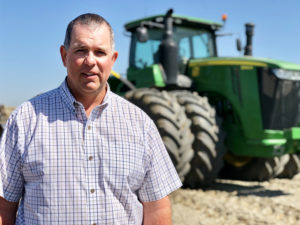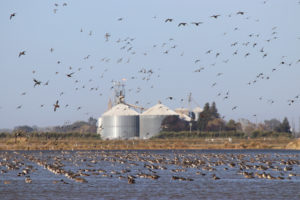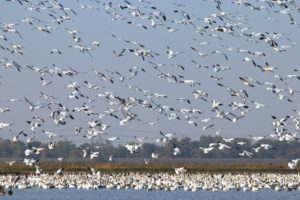Growing Together Spring 2021
Turning Passion into Results in Rice Conservation

The Montna family’s passion for wildlife and commitment to conservation-friendly agriculture has led to multiple easements on their working farmland that support waterfowl and other species while maintaining strong rice production. Through unique partnerships, Al and Gail Montna and their team at Montna Farms have discovered practices that are proving to be both environmentally and economically sustainable today and for future generations working in the rice industry.
Incorporating Waterfowl Easements Into Working Land
In 2001, Montna Farms partnered with Ducks Unlimited on the first-ever conservation easement on working rice land with a winter water component for waterfowl. The operation agreed to provide winter water after harvest each year on 1,200 acres of land in perpetuity on their headquarter ranch outside of Yuba City to support ducks, geese and other waterbirds during key migration periods. Montna Farms has continued to build off of this foundation by adding another 750 acres with Ducks Unlimited in 2007 and partnering with the Nature Conservancy on an additional easement on working rice land in 2013.

Through these waterfowl partnerships, the team incorporates new water management practices such as facilitating variable drawdowns of water at certain migration periods to support a variety of species. The response to the varying depths has been overwhelmingly positive, resulting in the creation of private and governmental programs that local growers can sign up for and receive payments to participate in today. With February being a critical month for waterbird migration in the Sacramento Flyway, the Montna team leaves the water on until the end of the month and transitions the land in early March without a delay in planting. Montna Farms also creates wide, flat levees in the rice fields to provide nesting areas for birds throughout the year.
“Conversation is part of our business on a day-to-day basis,” said Jon Munger, Vice President of Operations for Montna Farms. “We enjoy seeing the results and knowing that the practices we’re implementing are creating opportunities for many different species to thrive.”
Developing Habitats Through Repurposed Resources
In addition to waterfowl, Montna Farms has established conversation practices that support other wildlife and fish in nearby bodies of water. A great example of this is the Willow Slough property that Montna Farms took out of rice production in 2007 to turn it back into a natural habitat through an easement with the U.S. Fish and Wildlife Service.

“This property is in a floodplain, making it difficult to farm consistently across seasons,” shared Munger. “We were able to purchase another piece of land at that time so our rice production stayed consistent and we created a natural habitat on this 500-acre property that involved cutting into soils for deeper water ponds and transitioning areas back to marshland. Now it’s been 12 years of developing the property into seasonal marshlands, mallard brooding ponds and habitats for waterfowl, pheasants, quail, deer and many other animals.”
For fish, Montna Farms is working hand-in-hand with the multiple conservation organizations, California Rice Commission (CRC), other local landowners and the Northern California Water Association (NCWA) to find new solutions for increasing salmon populations. Building on the results of the Nigiri project that proved rice water grows salmon populations, the team is partnering with researchers such as those at UC Davis and CalTrout to repurpose rice water by growing fish in rice fields and flushing water from winter flooded rice fields into the river system as fish food. They’ve found that growth rates of fish in winter flooded rice fields vs. the river is significantly different in how much weight they gain per day.
Finding the Right Partners
“Over the years, we’ve built strong working relationships with many different types of conservation organizations and that’s played a key role in the success of these initiatives,” shared Munger. “I’d encourage growers who are interested in implementing these types of practices to work closely with the California Rice Commission to get connected with organizations who are actively pursuing these partnerships.”
Thank you California Rice Commission for providing the photos in this article.
